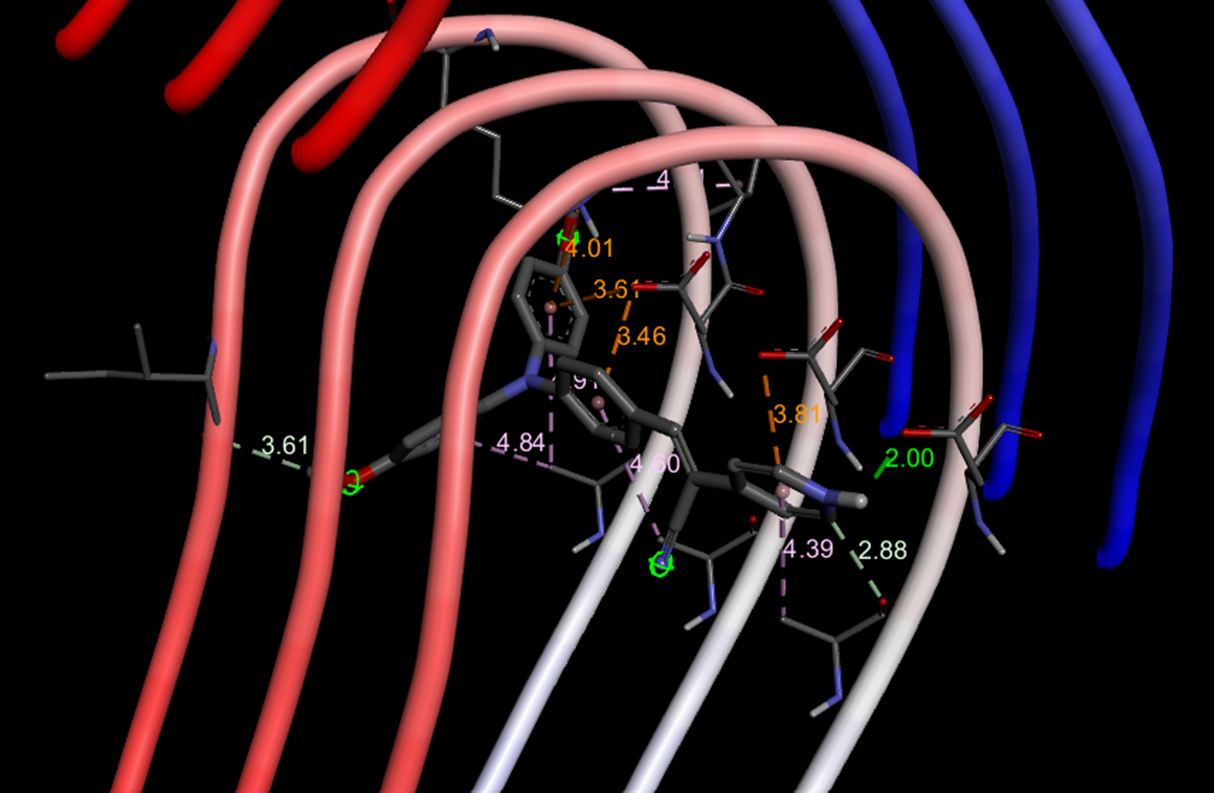Research Progress
Ongoing Work (brief overview)
In this study, we have designed and synthesized a series of fluorescent molecules with aggregation-induced emission (AIE) properties. These molecules are easily dispersed in water and aqueous-based solvents, making them suitable for use in biochemical assays. Our theoretical studies have shown that the TPA-CNPy molecule has a higher affinity for amyloid beta than other molecules, making it a promising diagnostic agent for Alzheimer's disease. The molecule exhibits turn-on fluorescence and binds to Cu(II), a significant pathogen in Alzheimer's disease. Our detailed studies have confirmed that the molecule is highly stable and can inhibit the fibrilization pathway by interacting with the β-sheet region Aβ 16-21. We have also conducted toxicity studies with various cell lines and found that the molecule has negligible toxicity at the working concentration.

We are now aiming for the development of a “fast and affordable” device that will help us quantify Aβ in human cerebrospinal fluid as well as determine the different stages of the disease.

Timeline:

